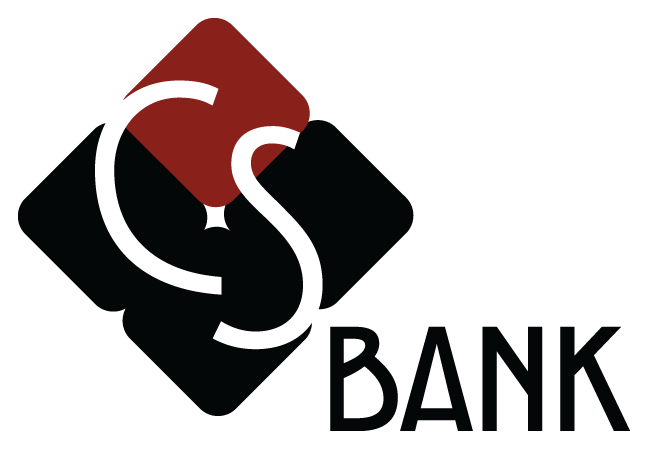%20(6).jpg)
What is a Reverse Mortgage and How Does it Work
Reverse mortgages are a popular way for retired individuals who own their homes to receive extra income, usually in the form of a payment each month or a lump sum. Most reverse mortgages are only available to homeowners who are 62 and older.
If you own your own home and are looking for supplemental income options, getting a reverse mortgage may be right for you. However, reverse mortgages are loans, and as such have associated costs. Additionally, because the balance of the loan is due when you move out of your home, it’s important to understand the terms and conditions to be sure they are the right choice for you.
In this post we’ll discuss how reverse mortgages work, how to make an informed decision about this lending product, and how to avoid reverse mortgage scams—an unfortunately common occurrence—by working with trusted financial partners.
How does a Reverse Mortgage work?
A reverse mortgage allows individuals to borrow against the equity they have in their home (similar to home equity loan). However, unlike a home equity loan or home equity line of credit, a reverse mortgage loan isn’t required to be paid off until the borrower no longer resides in the home.
Like other home loans there is an application and closing process. When you apply for a reverse mortgage, your lender will review details of your home (often ordering an appraisal), as well as information pertaining to any existing home loans. Income and credit history are usually not required in the application, but you will need to have at least 50% equity in your home to qualify.
How are payments received?
When you apply for your loan, you will choose whether you want a fixed-rate or adjustable-rate reverse mortgage (where available), as well as how you receive your funds: in monthly installments, as a lump sum, or as a line of credit.
Monthly payments can be received in the form of a mailed check or automatic deposit to a designated bank account. Lump sum payments will be received via a check at loan closing. Your lender will work with you to determine the best way for you to receive your payments.
How is the loan paid back?
No matter how you choose to receive payments, you will not be required to pay off the loan as long as you reside within your home.
Once you are no longer residing in your home, you or your heirs will be required to settle the balance. Your lender will send a “due and payable” notification to you or your heirs, at which point there will be a period of 30 days before the balance must be paid. The home can be sold, turned over to the lender, or the balance can be paid by other means if you or your heirs do not wish to sell your home.
Applying with a coborrower? Many individuals worry that if their coborrower outlives them or they are required to move into an assisted living facility, their coborrower will no longer be able to receive reverse mortgage payments or remain in their home. Fortunately, this is not the case. If you apply for your reverse mortgage with your spouse or another coborrower, they can stay in the home (and continue to receive reverse mortgage funds if available) even if you yourself no longer reside in the home. However, they will need to fulfill ongoing obligations of the reverse mortgage, including payoff when they no longer live in the home.
You can maintain a reverse mortgage as long as you live in your home
How to Qualify for a Reverse Mortgage
As we mentioned above, for most reverse mortgages, including reverse mortgages offered at CS Bank, borrowers must be at least 62 years of age.
Ideally, you will own your home with no mortgage or other home loan. However, if you do have other loans out on your home, you’ll need to be able to pay them off—either with funds from the reverse mortgage or from other sources. You cannot have a mortgage and reverse mortgage simultaneously.
Reverse mortgages are only available on primary residences that are in good repair. As the borrower, you are responsible for keeping up with property taxes, maintaining homeowners’ insurance, and keeping your home in good condition.
Types of Reverse Mortgages
For most borrowers, the type of reverse mortgage you choose will be based on your eligibility and what you need the loan for. Let’s take a look at the three main kinds to get a better idea of what would work best for you.
Home Equity Conversion Mortgages: A Home Equity Conversion Mortgages (HECM) is the most common type of reverse mortgage. Offered by local banks like CS Bank and ensured by the Federal Housing Administration, this type of loan requires that you are up to date on all federal debt to qualify. The current (2024) borrowing limit of HECMs is $1,149,825.
Proprietary Reverse Mortgages: Is your home worth more than the borrowing limit for HECMs and other reverse mortgages? Proprietary reverse mortgages, also called “jumbo reverse mortgages”, are also offered by private lenders, but not insured by the FHA. These reverse mortgages allow you to borrow at limits over $1,149,825.
Single-Purpose Reverse Mortgages: Available to low- or moderate- income borrowers, these reverse mortgages are sponsored by state or local governments or non-profits. As their name suggests, they can only be used for specific purposes such as paying property taxes or for home repairs.
Other Home Loan Options
Under 62? Still have a large balance on your existing mortgage? There are other options available to individuals that allow them to take advantage of home equity, even if they don’t qualify for a reverse mortgage. These include:
- Home Equity Loans: A home equity loan is a type of loan where homeowners borrow against the equity in their property (up to 80% to 90% of existing equity), receiving a lump sum that is repaid over time with a fixed interest rate.
- Home Equity Line of Credit (HELOC): A HELOC is a revolving line of credit like a credit card, secured by the equity in a home. HELOCs allow homeowners to borrow as needed up to a predetermined limit (usually 80 to 90% of existing equity).
- Cash-Out Refinance: With a cash-out refinance you’ll replace your existing mortgage with a new one, receiving a portion of the equity in cash at closing.
Things to Do Before Applying for a Reverse Mortgage
Ready to apply for a reverse mortgage? There are a few steps you should take to prepare for your application:
1. Consider: How will you use the income from the loan?
Knowing what you’ll use the loan for can help you determine which kind of reverse mortgage and which type of payout (lump sum, monthly, or line of credit) will meet your needs.
2. Determine: How long do you plan on saying in your home?
If you think you may be moving into assisted living or with a family member within the next five years, know that once you move out of your home you will be responsible for paying back your reverse mortgage.
3. Discuss with your family: Do you want to pass your home down to your children or other heirs?
If you were hoping to pass on your home, remember that the balance of the reverse mortgage must be satisfied once you no longer live in the home. If there are no alternative funds with which to pay off the balance, the home will need to be sold or turned over to the lender to satisfy the loan.
4. Learn about costs and terms.
Take the time to speak with your lender to understand the costs and terms associated with a reverse mortgage. From origination fees to interest charges, before you sign a reverse mortgage it’s important to know your out-of-pocket costs to determine if this type of loan makes the most financial sense for your situation. This can vary based on the kind of payout you receive, current interest rates, and if your interest rate is fixed or variable.
A reverse mortgage allows individuals to borrow against the equity they have in their home
Watch out for Scams Related to Reverse Mortgages
There are many sound reasons to get a reverse mortgage. However, scammers may target elderly individuals who own their homes, pressuring them to take out a reverse mortgage for their own gain. Scams to look out for include:
- Contractor scams, where contractors try to convince homeowners to take out a reverse mortgage for a renovation project. The services offered may be legitimate or fake, but in either case will benefit the contractor over the homeowner. Often, these contractors will contact you or make an unsolicited visit to your home.
- House-flipping scams involve scammers pressuring homeowners to take out a reverse mortgage, utilizing the funds to acquire another property for the homeowner. This new home, typically purchased at a low cost by the scammers, may be superficially renovated, though the true extent of the disrepair becomes apparent to the new homeowner only after the transaction is completed, and the scammers have pocketed the proceeds.
- Fake VA Loans that target veterans for reverse mortgages. Note, the Department of Veteran Affairs does not offer reverse mortgages and any ads claiming to be associated with the VA are fraudulent.
- Foreclosure scams offer a solution to foreclosure with a reverse mortgage that pays off the balance of your mortgage. Well reverse mortgages may be useful when facing foreclosure, they can be more costly than other options that allow you to keep the equity in your home. Always consult with a trusted lender before taking this approach.
- Equity theft scams usually involve a network of dishonest appraisers, attorneys, and loan officers, these entities collaborate to artificially boost a home's appraisal, creating a false impression of increased homeowner equity. Scammers then persuade the homeowner to pursue a reverse mortgage based on the inflated equity. They may abscond with the loan proceeds, leaving the borrower with depleted equity.
- Financial advisor scams may involve a deceptive financial planner who convinces homeowners to take out a reverse mortgage to take advantage of investment opportunities. Most investments are not a sure thing, even when working with a trusted advisor. A good rule of thumb is to never borrow money for an investment—and never trust an advisor who tells you otherwise.
If a third party or relative suggests a reverse mortgage to you, take the time to speak to someone you trust, like a trusted relative or bank representative, before signing on the dotted line.
Right of Rescission
Additionally, know that if you do take out a reverse mortgage against your will or better judgment, you have three days after closing to change your mind. Called the “Right of Rescission,” you can notify your lender within three days in writing and by certified mail. Your lender will have 20 days to return any fees associated with the loan.
Is a Reverse Mortgage Right for You?
Reverse mortgages are useful lending tools for many individuals, allowing them to stay in their homes while receiving supplemental income. Curious about reverse mortgages? We can help. We’ll review your financial picture, answer your questions, and help you weigh reverse mortgage pros and cons so you can be confident in your choice. You can also check out our reverse mortgage calculator.
At CS Bank, we are a full-service mortgage provider. Our experienced lenders are well-versed in reverse mortgages as well as other home equity lending products. Call or visit us at a branch in Northwest Arkansas or Southwest Missouri today to explore your options and find the right solution for you and your family.


